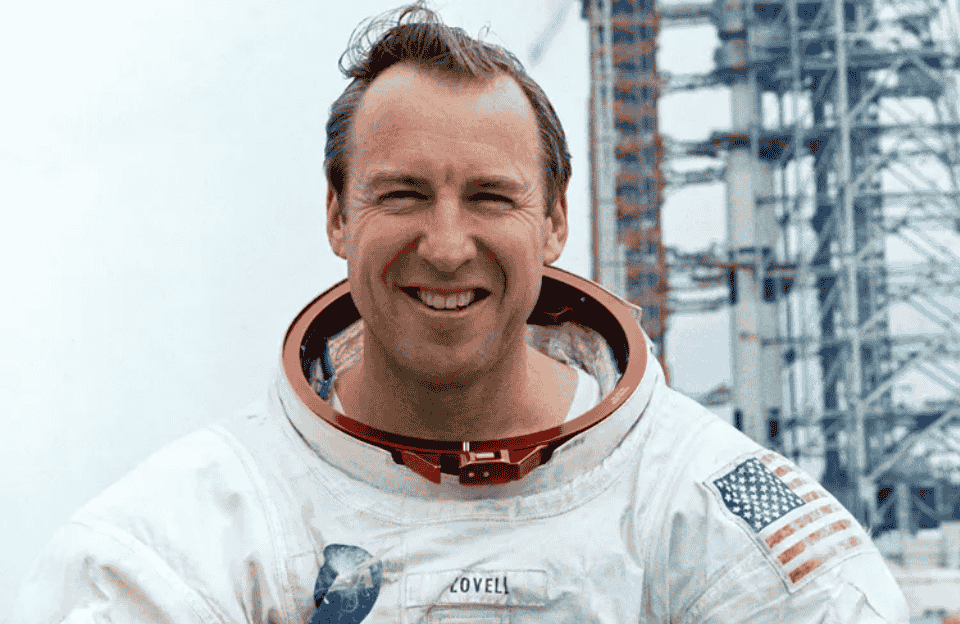If you’ve seen the movie Apollo 13 or heard the phrase “Houston, we’ve had a problem,” then you already know a little about Jim Lovell. But the real story of Lovell’s life goes far beyond that one famous mission. He wasn’t just an astronaut—he was a leader, a problem-solver, a family man, and someone who helped shape the history of space exploration.
This is the journey of how a Navy pilot became one of NASA’s most respected astronauts, what made him stand out among his peers, and why his name is still celebrated today.
Key Takeaways
- Jim Lovell flew four space missions, including Apollo 8 and Apollo 13.
- His calm leadership during Apollo 13 saved his crew in a life-threatening situation.
- He valued family deeply, honoring his wife Marilyn and supporting his children throughout his career.
- Lovell inspired generations of astronauts and space enthusiasts with his resilience and humility.
Early Life: Curiosity Takes Flight
James Arthur Lovell Jr. was born on March 25, 1928, in Cleveland, Ohio. Like many kids in the 1930s, he grew up during the Great Depression, but his imagination was already reaching for the stars. He built model rockets, read about aviation, and dreamed of one day exploring the skies.
After high school, Lovell attended the U.S. Naval Academy. By the time he graduated in 1952, he had already made one of the most important decisions of his life—marrying his high school sweetheart, Marilyn Lillie Gerlach. That same year, he became a Navy pilot, setting the stage for a career that would soon leave Earth’s atmosphere entirely.
A Strong Family Foundation
Jim and his wife Marilyn went on to have four children: Barbara, Susan, James III, and Jeffrey. The jim lovell children grew up with a father who had one of the most dangerous jobs imaginable, but at home, Lovell kept things down-to-earth. He made it a point to be present whenever possible—attending school events, eating family dinners, and supporting his kids’ interests.
His wife was a constant source of support. During long missions and grueling training schedules, Marilyn kept the household running. She also became part of NASA’s close-knit community of astronaut spouses, who leaned on each other during launches and emergencies.
Joining NASA: The “New Nine”
In 1962, Lovell was chosen as part of NASA’s second group of astronauts, nicknamed the “New Nine.” These men would carry the U.S. space program from short orbital flights into more complex missions that would eventually land humans on the Moon.
Lovell was already an experienced pilot, but space required an entirely new skill set—navigation without landmarks, working in zero gravity, and operating spacecraft systems under intense pressure. Over the next few years, he would master them all.
The Gemini Program: Preparing for the Moon
The Gemini Program was where astronauts learned the skills needed for Apollo. Lovell’s first flight was Gemini 7 in 1965 with Frank Borman. They spent 14 days in orbit—a record at the time—testing how the human body copes with long space missions. It wasn’t glamorous; the capsule was cramped, and there were no showers. But it proved humans could handle the long trip to the Moon.
Lovell’s second Gemini mission, Gemini 12 in 1966, paired him with Buzz Aldrin. This time, the focus was on perfecting spacewalks and docking with other spacecraft. These were crucial skills for lunar missions, and Lovell’s calm approach helped make the mission a complete success.
Apollo 8: Humanity’s First Lunar Orbit
In December 1968, Lovell became the Command Module Pilot for Apollo 8, the first mission to leave Earth’s orbit and travel to the Moon. Along with Frank Borman and Bill Anders, Lovell helped guide the spacecraft around the Moon ten times before returning home.
The crew sent back the famous “Earthrise” photograph—a stunning image of our planet rising over the Moon’s horizon. For many people, it was the first time they saw Earth as a small, fragile world floating in the vastness of space. On Christmas Eve, Lovell and his crewmates read from the Book of Genesis in a live broadcast watched by millions, bringing a moment of unity to a turbulent world.
Apollo 13: Leadership in Crisis
April 1970 was supposed to be Lovell’s big moment. As commander of Apollo 13, he would finally walk on the Moon. But two days into the mission, an oxygen tank exploded, crippling the spacecraft. Lights went out, alarms blared, and the crew’s lives were suddenly in danger.
Lovell’s leadership in that moment became legendary. Working with astronauts Jack Swigert and Fred Haise, and in constant communication with NASA engineers on the ground, he helped improvise solutions—like using duct tape and cardboard to fix the carbon dioxide filter.
The mission was scrapped, but all three astronauts made it back safely. Apollo 13 became known as a “successful failure”—a story of teamwork and resilience under impossible odds.
Table: Jim Lovell’s Space Missions
| Year | Mission | Role | Notable Achievement |
| 1965 | Gemini 7 | Pilot | Longest crewed spaceflight at the time |
| 1966 | Gemini 12 | Commander | Perfected spacewalk techniques |
| 1968 | Apollo 8 | Command Module Pilot | First humans to orbit the Moon |
| 1970 | Apollo 13 | Commander | Safe return after catastrophic spacecraft failure |
Life After NASA
Lovell retired from NASA and the Navy in 1973 but stayed active in the aerospace and business world. He co-wrote Lost Moon with Jeffrey Kluger, which became the basis for the 1995 movie Apollo 13, starring Tom Hanks as Lovell. The film brought his story to a new generation and won multiple Academy Awards.
He also spent time giving lectures, sharing his experiences with students, engineers, and space enthusiasts around the world. His message was always about preparation, teamwork, and staying calm when things go wrong.
Personal Tributes: “Mount Marilyn”
Lovell’s love for his wife was well-known. During Apollo 8, while orbiting the Moon, he pointed out a small mountain and informally named it “Mount Marilyn” in her honor. Decades later, in 2017, the International Astronomical Union officially recognized the name.
Even in the most historic moments of his career, Lovell found ways to connect them back to his family.
Final Years and Passing
For those asking when did Jim Lovell die, the answer is August 7, 2025. He passed away at his home in Lake Forest, Illinois—the same place he had lived for decades with Marilyn. His wife had died two years earlier, in August 2023, at the age of 93.
Fans often wondered where does Jim Lovell live, and the answer was always tied to that Illinois home, where he welcomed friends, family, and the occasional reporter wanting to hear his stories firsthand.
Legacy and Honors
Jim Lovell received many awards, including:
- Presidential Medal of Freedom for Apollo 13
- Congressional Space Medal of Honor
- Induction into the U.S. Astronaut Hall of Fame
- Numerous honorary degrees
But perhaps his greatest legacy is the example he set. Lovell proved that leadership is about staying focused when everyone else is panicking, and that success is often measured by how you handle failure.
Fun Facts About Jim Lovell
- He logged over 715 hours in space without ever setting foot on the Moon.
- His nickname among fellow astronauts was “Smilin’ Jim.”
- He trained for a Moon landing twice but never got the chance due to mission changes and Apollo 13’s accident.
- “Mount Marilyn” remains one of the few lunar features named after a living person’s spouse.
FAQs
1. When did Jim Lovell die?
He died on August 7, 2025, at age 97, in Lake Forest, Illinois.
2. Where does Jim Lovell live?
For most of his post-NASA life, Lovell lived in Lake Forest, Illinois.
3. Who was Jim Lovell’s wife?
His wife was Marilyn Lillie Gerlach, whom he married in 1952. She passed away in August 2023.
4. How many children did Jim Lovell have?
Lovell had four children: Barbara, Susan, James III, and Jeffrey.
5. Why is Apollo 13 so famous?
It’s remembered as a “successful failure” where teamwork and leadership brought the crew home safely after a near-fatal accident.
Jim Lovell’s life is the kind of story that sticks with you—not because everything went according to plan, but because it didn’t. He showed that great leaders don’t just shine in moments of victory—they rise to the occasion when everything seems lost. And that’s why, decades later, he’s still remembered as one of NASA’s greatest astronauts.
Mariam holds an MS in Sociology and brings a sharp, people-centered perspective to her writing. She contributes to multiple websites, covering business, current news, and trending topics with insight and creativity that connects with readers.


